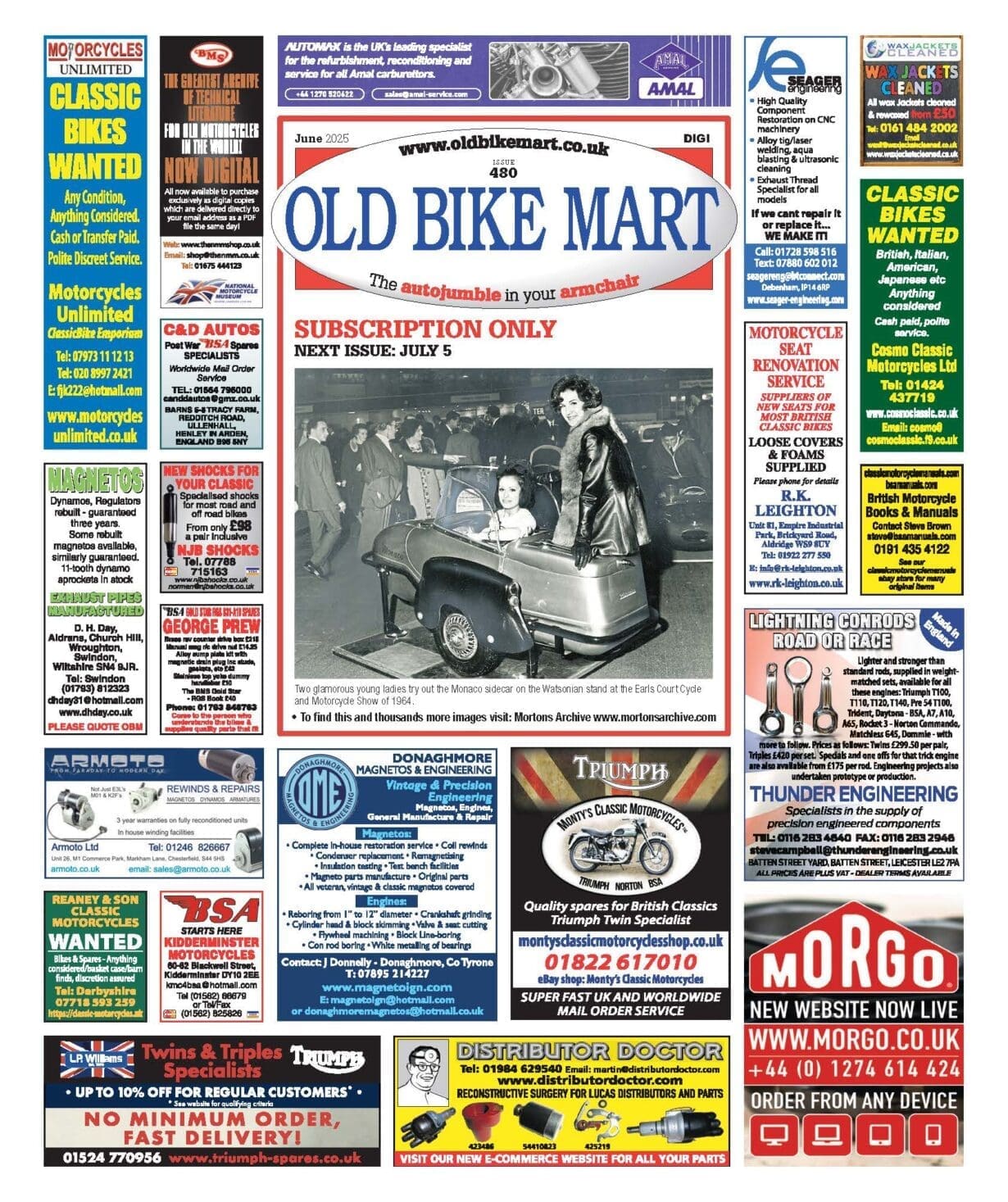John Milton looks back over the career of John Hartle.
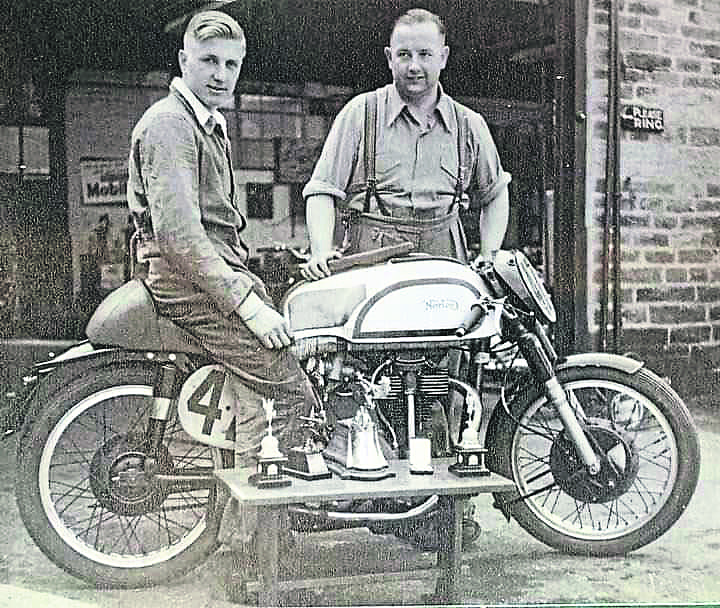
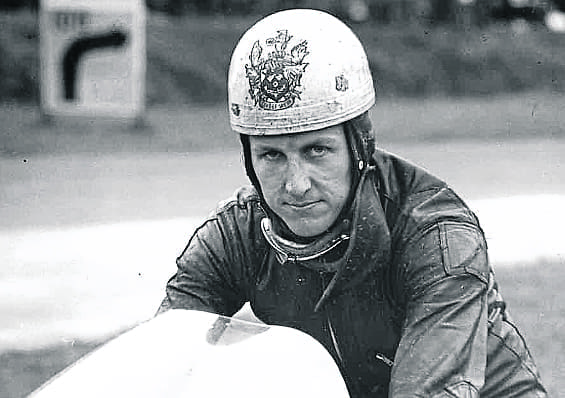
There are some motorcycle riders who seem destined to be world champions, for whom it can only be a matter of time before those laurels rest upon their head. If championships were decided upon skill, determination and affability, then John Hartle would have won a world champion’s crown several times over, but fate had other ideas. For to be a world champion takes not only talent and grit, but luck, and while John had the former two qualities in abundance, the third was often sadly missing from his career.
For most young riders, achieving a works ride is the ultimate goal and one can only imagine how excited the 21-year-old Hartle was to be riding in his first race meeting under a factory flag. It was Oulton Park in the spring of 1955 and the Norton service van had arrived from Bracebridge Street bearing a pair of sparkling new bikes on which Hartle was to campaign. Joe Craig, Norton’s legendary racing team chief, was even present to see the new recruit race. But Hartle was sent home before he could even wheel one of the new machines on to the track.
But why? Accident? Injury? Mechanical breakdown? No, something far more prosaic – the flu. Having been hit by influenza, Hartle was deemed too unwell to race and sent home to bed.
But this is getting ahead of the story. John Hartle was born in Chapel-en-le-Frith, Derbyshire, just before Christmas 1933. He left school at 15 and went to work in a local garage, but his heart always lay more with two wheels than four. He spent his spare time hanging around Eric Bowers’ motorcycle dealership in the town. (Eric had received the very first BSA Bantam to roll off the production line in 1948, probably around the time that the young John Hartle began to haunt his shop.)
Hartle would also turn up at the trials and scrambles in which Bowers competed and, realising how keen he was, Bowers soon found jobs for him to do around the place. Finally, when he was 17, Hartle joined the Bowers concern as a mechanic just at the point that Bowers decided to retire from competition. But this didn’t sever his connection with motorsport; instead, he turned his attention to being an entrant.
The first road race riders for Eric Bowers were Leo Starr and Eric Housley, while John Hartle was loaned a 197cc Francis-Barnett for trials. However, he looked after the racing machines and proof of the good work he did came in 1952 when Eric Housley won the Junior Clubman TT on the Isle of Man on a 350cc BSA Goldstar prepared by Hartle. This indirect victory made Hartle keen to try his hand at racing and he finally persuaded Eric Bowers to give him a bike. Well, it wasn’t so much a bike as a pile of parts, a plunger frame for which a BSA engine was hastily built up out of spare parts.
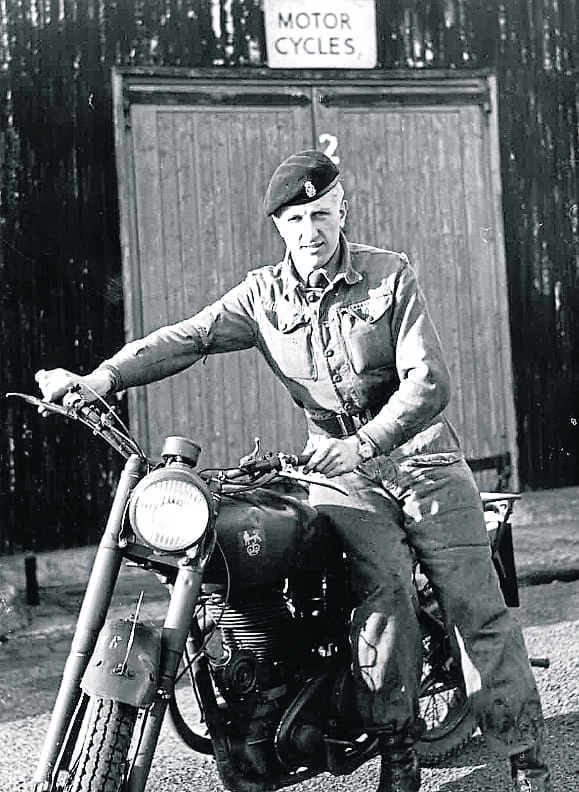
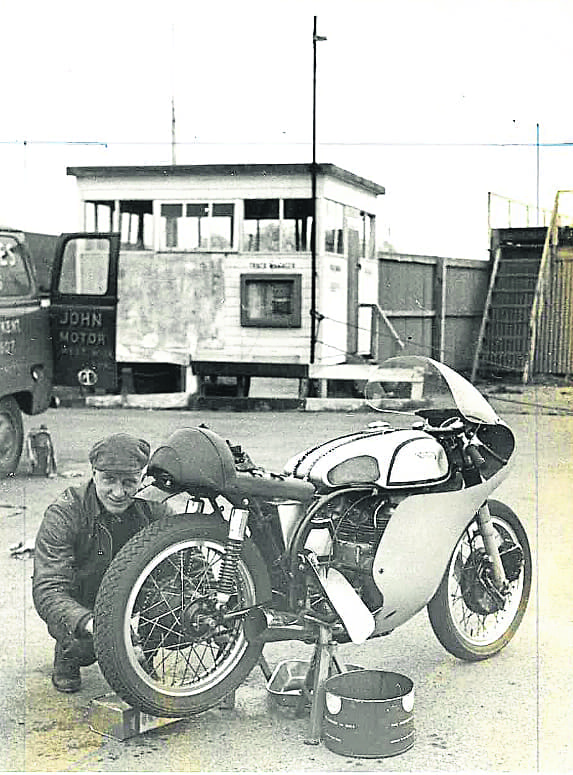


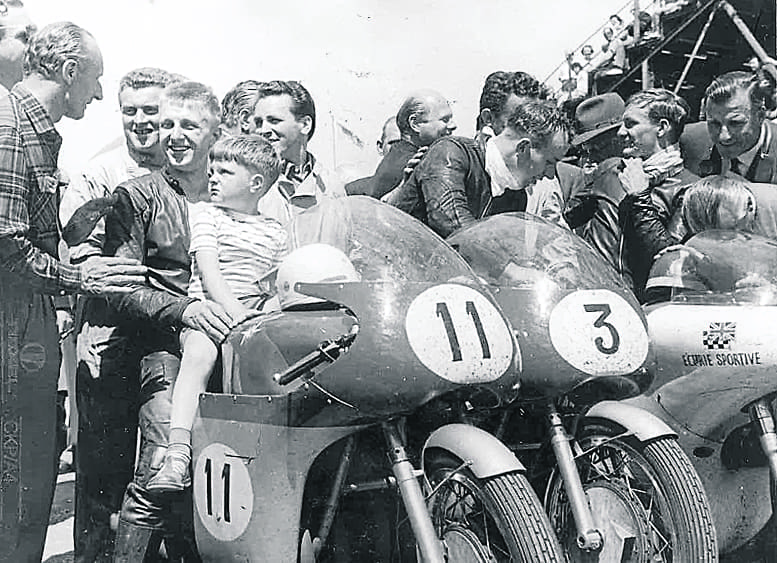

On Good Friday 1953 he started in his first race at Brough Airfield near Hull, having found himself drawn at the front of the grid alongside Ken Kavanagh on a factory Norton and Eric Housley. The flag went down, the field sped away … except for Hartle on the BSA. Eventually he did get going and finished the race, although that was the best that could be said for his placing. Undeterred, he also rode the BSA in the 500cc event and promptly dumped it in some gravel while trying to overtake.
Following meetings brought experience but no real success, but Eric Bowers still supplied a new AJS 7R for the Manx Grand Prix, while Jack Bailey of Holmfirth offered his own brand-new Manx Norton for the 500cc race, both the first actual race bikes that John had ever ridden. Later Hartle would say: “The AJS was my first real racing mount and I was rather apprehensive. At the end of the fourth lap I was lying about 10th when I call in for refuelling. It was the first time I’d ever made a pit stop. Following the excitement of the refill, I braked too hard for Quarter Bridge and the machine went from under me.” Fortunately, neither the bike nor John were badly injured – indeed, he got back on and finished in 21st place – although Jack Bailey must have then been a little nervous about Hartle taking his personal Norton out in the senior race!
But in the senior, Hartle rode a little more circumspectly and arrived home in 15th place, the two results earning him the Newcomers Award. John Hartle was on the way.
That would be confirmed in 1954 when, again on an AJS 7R and Manx Norton (both provided by Bowers this time), he returned to the Island for the Manx Grand Prix and finished third in the junior race. At the start of the senior race, Derek Ennett led for two laps before being overtaken by Hartle on the Norton. Hartle led all the way to the final lap where he was ahead of his nearest competitor by five minutes (yes, minutes, not seconds!).
But the weather was dreadful that day with driving rain and gale force winds lashing the island. The result was not to buffet Hartle from his mount, but to take its toll on the bike’s fuel consumption. When he reached the Mountain Box on the last lap, the Norton ran out of petrol. Unable to even freewheel against the strong wind, he borrowed some fuel from a spectator and ambled back to the pits, his race over so close to the finish.
However, that year John Hartle would take a prize away from the Isle of Man. A young GPO telephonist called June was staying at the same boarding house in Douglas as the Bowers team during the TT and she and Hartle were rather taken with each other, so much so that she would soon become Mrs Hartle and they would go on to have three children. Sadly, the marriage was not to last but John’s second wife, Shelagh, was always a sterling supporter of his racing career.
Towards the end of 1954, Eric Bowers was concentrating on building up a coach business (which would last until 2012 when it was taken over by Centrebus) and seriously considering ceasing his sporting activities which, of course, would leave Hartle without any sponsorship. So, at the London Motorcycle Show in November, he spoke to Ted Pink of Pinks of Harrow and Pink agreed to order two new motorcycles from Norton for Hartle to ride in the 1955 season.
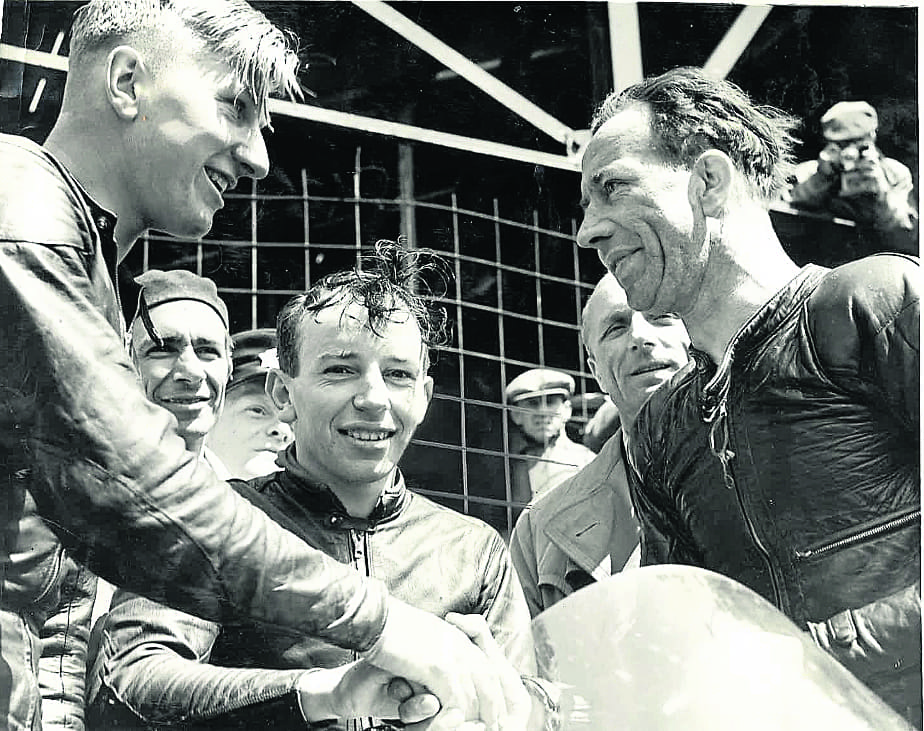

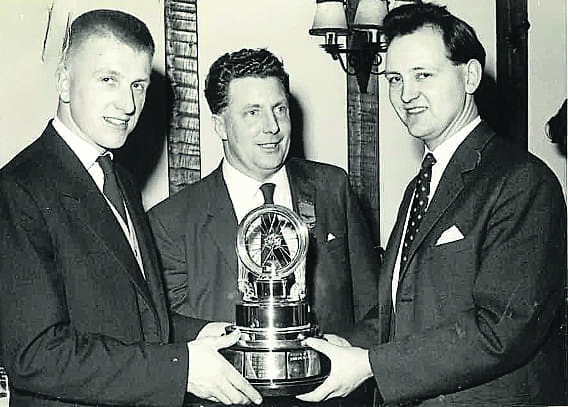
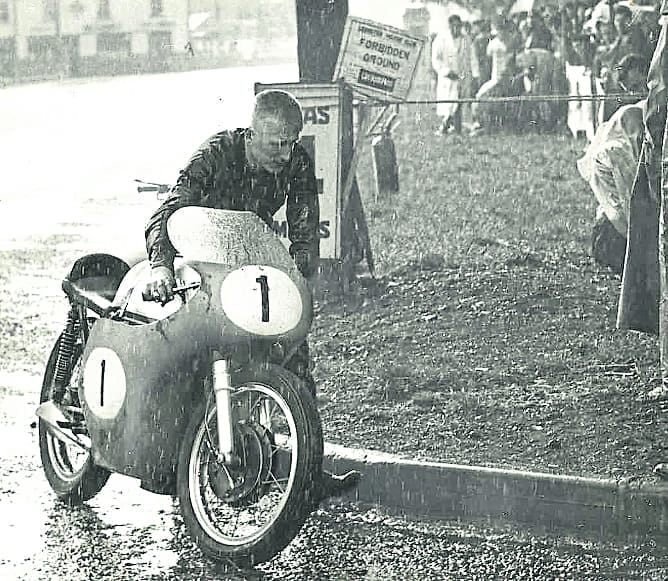


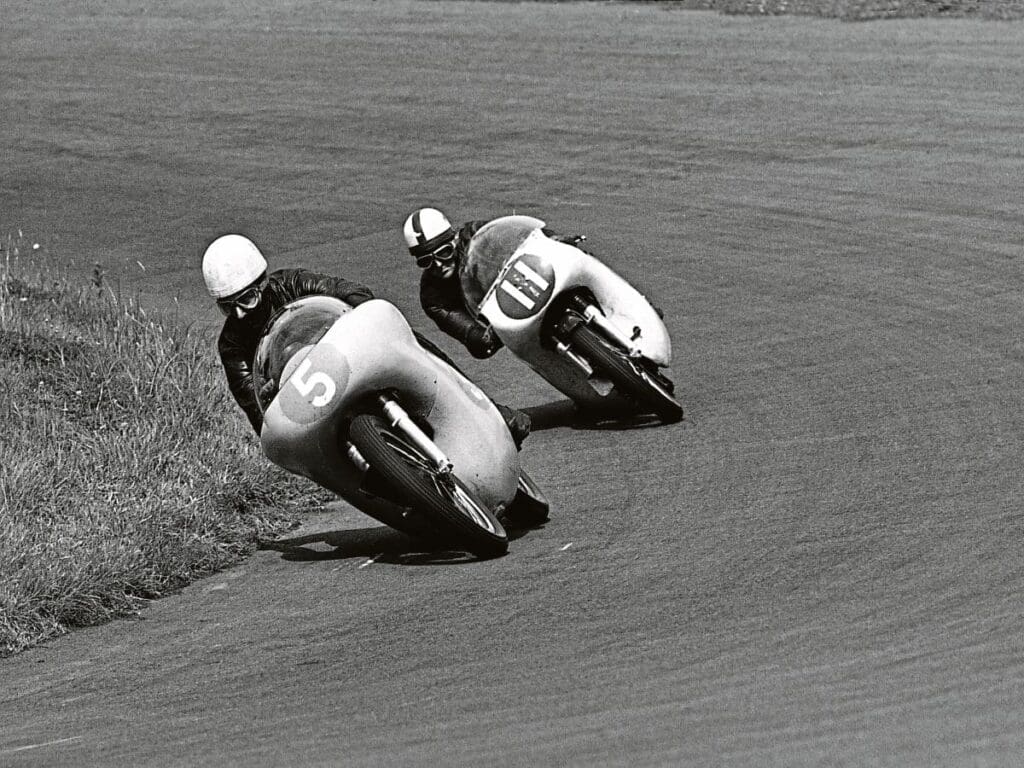

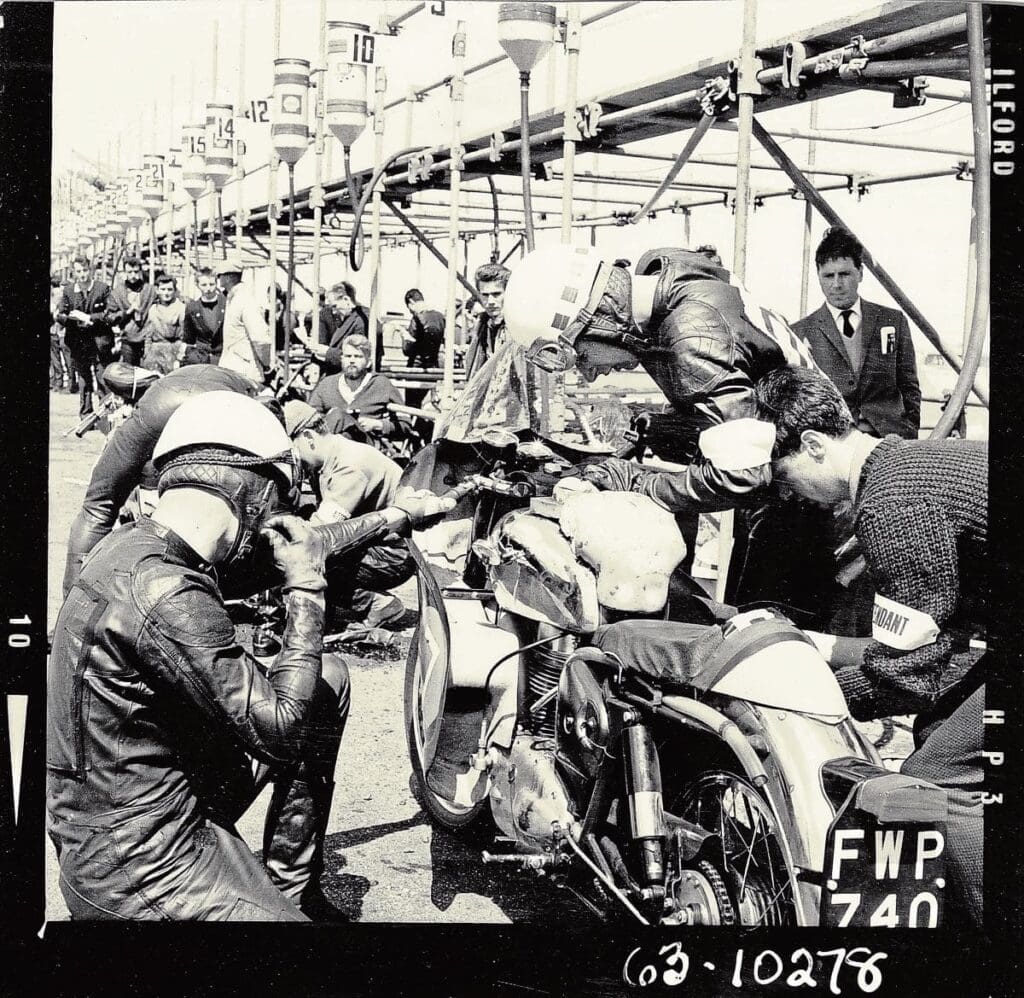
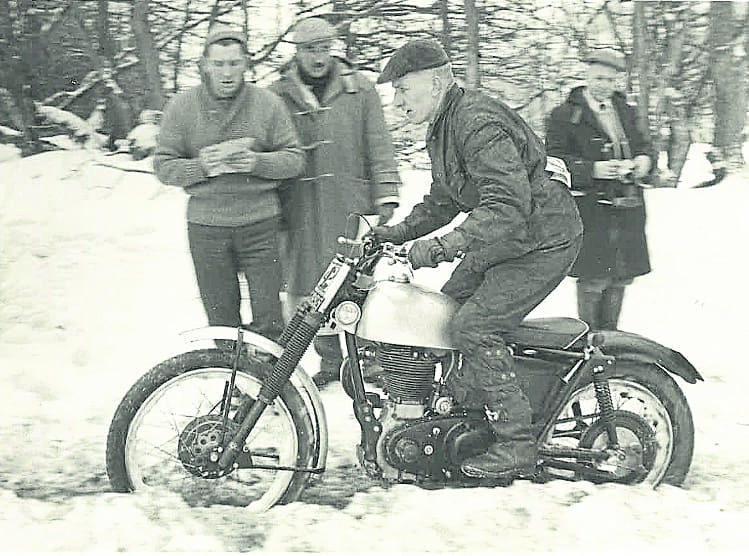
But news soon came from the factory that the machines would not be ready until the TT in June. Hartle wanted to race in the Northwest 200 and so he wrote to Norton and asked if it could loan him a 350cc model. For once luck appeared to be on his side; the factory wrote back and instead of offering him a loaner, invited him to join the works team.
Of course, as we’ve seen, Lady Luck can be fickle and that first outing as a genuine Norton factory team member was scuppered by the flu. Joe Craig was apparently unimpressed at the incident when Hartle had run out of fuel in the Manx Grand Prix the previous year, yet the very same thing happened again in John’s first senior TT as a Norton works rider!
Despite a year that had been steady rather than meteoric – there were two second places at the Ulster GP – Norton renewed his contract for 1956. By now, John had left Bowers and went to train as a coal miner, but he soon found that a life at the coal face was not for him and so being called up to do his National Service was something of a relief, especially when the Army – not always noted for putting people in the right jobs! – took advantage of his skills. As Lance Corporal John Hartle in the RAOC, he was stationed at Aldershot and charged with training novice dispatch riders. During his time in the Army he rediscovered trails riding and was a member of his battalion’s team, being very proud when his team won the RAOC Championship.
While being in the Army might have seemed to be a hindrance to his burgeoning racing career, clearly someone at Norton had the ear of the War Office for Hartle was afforded weekend leave to race at meetings in this country. At the 1956 Ulster GP he won his first world championship race and would finish third in the championship itself. However, being in the forces did pose a problem in that, despite interest from manufacturers, he was unable to sign a professional contract with another factory while he was still serving, which is why he started 1957 once again riding for Eric Bowers, who had decided that he still enjoyed being an entrant.
As a privateer he struggled against the factory motorcycles, but still finished 5th in the 1957 350cc championship. At the Dutch GP he crashed when Bob Geeson’s 250cc REG which he was riding blew up. The bike sustained too much damage to be repaired in time for the Belgian GP the following weekend, so MV Agusta was persuaded to loan Hartle an experimental 250cc twin. John won the race, beating Sammy Miller on a Mondial and recording an average speed of 106.58mph. Allied with persuasion from John Surtees who had been John’s team-mate at Norton and was now riding for Count Agusta, MV Agusta offered John a two-year contract.
That first year was something of a curate’s egg, either very good or, well, not so good at all. In the 1958 Senior TT, Hartle’s machine caught fire at Governor’s Bridge on the third lap but he still went on to finish second in both the 350cc and 500cc world championships, both times behind his colleague John Surtees, and a massive coup for MV Agusta.
The following year proved to be less auspicious. John seemed to suffer constant mechanical problems and, while in second place in the Junior TT, he crashed, breaking his wrist and sidelining him for a while, although he did finish in the runner-up position again in the 350cc world championship. Thanks to John Surtees’ influence, MV Agusta renewed his contract in 1960 and Hartle went on to to have his most successful year on the island, winning the Junior TT and coming second in the Senior.
But the factory soon began to cut back on its racing commitments and, rather than only having the occasional ride, John asked to be released from his contract.
There was almost a deal with Honda which, although he did get a couple of rides on a Honda, never came to fruition.
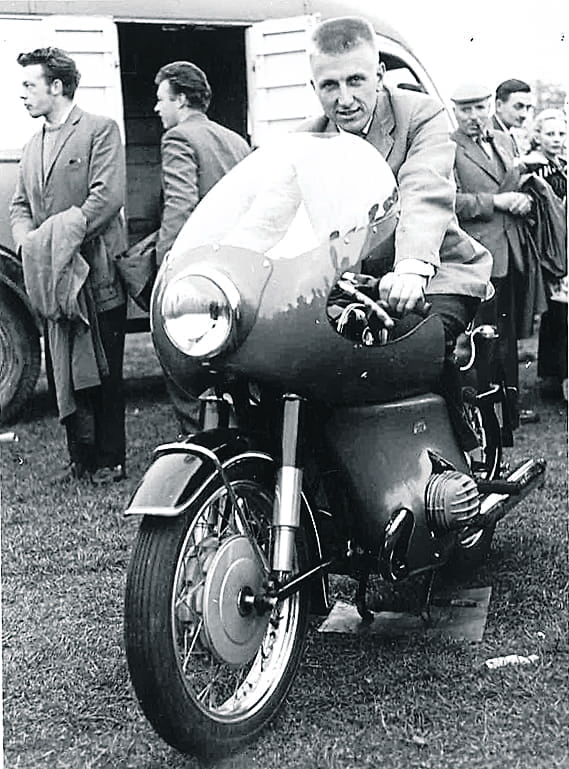
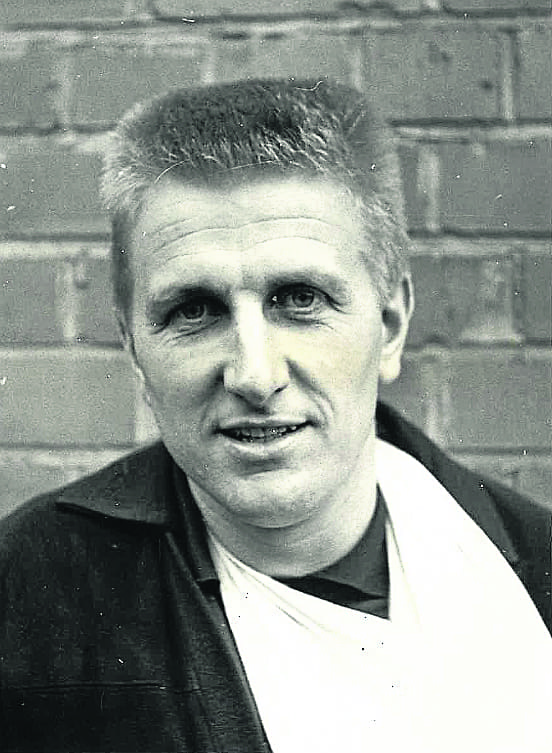
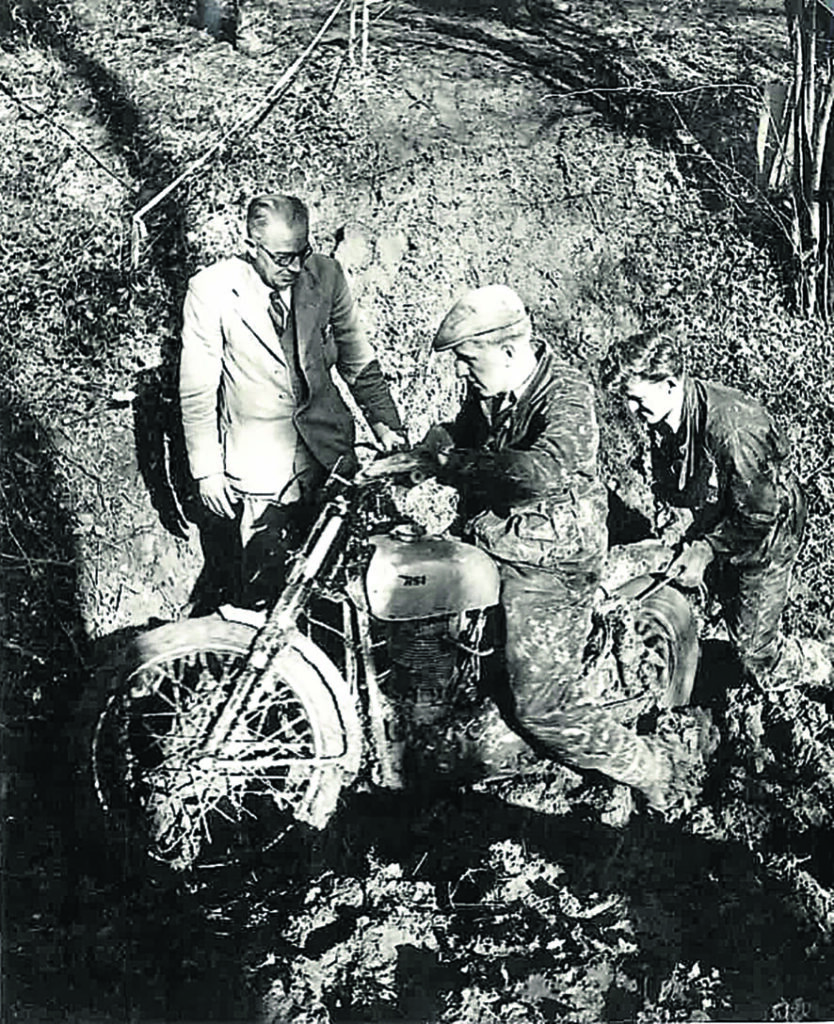
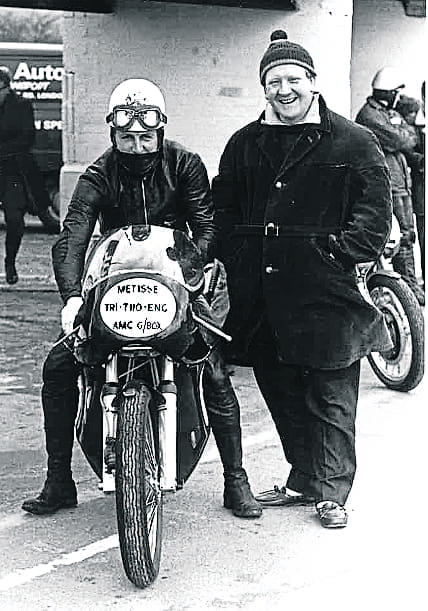
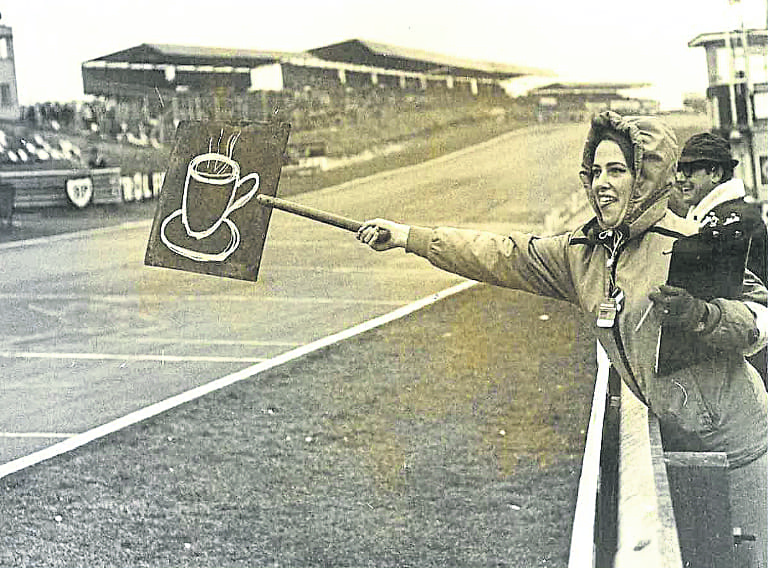
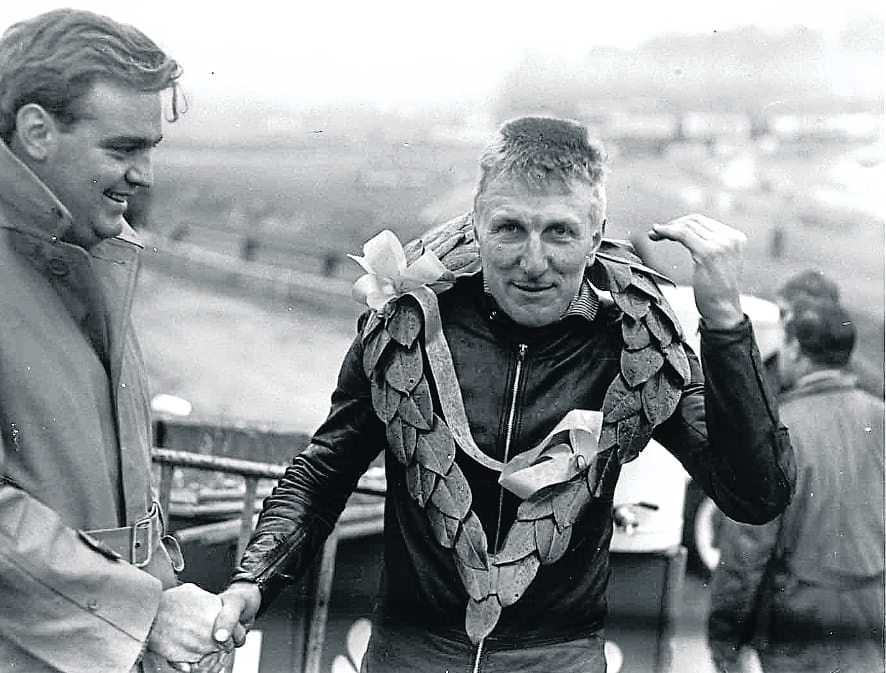
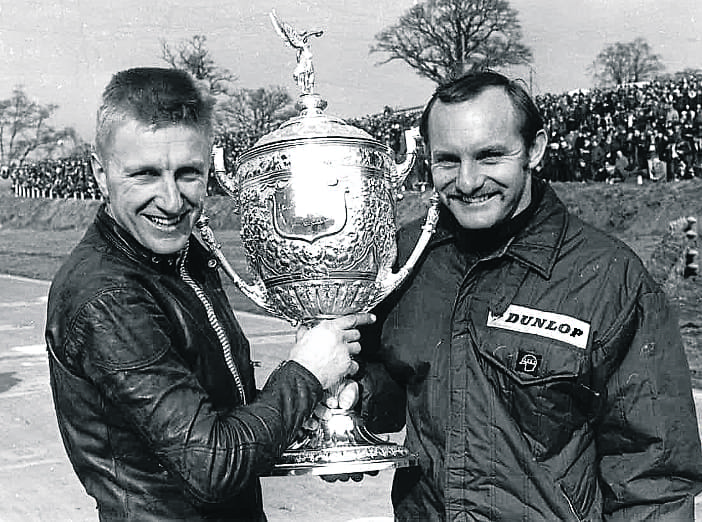
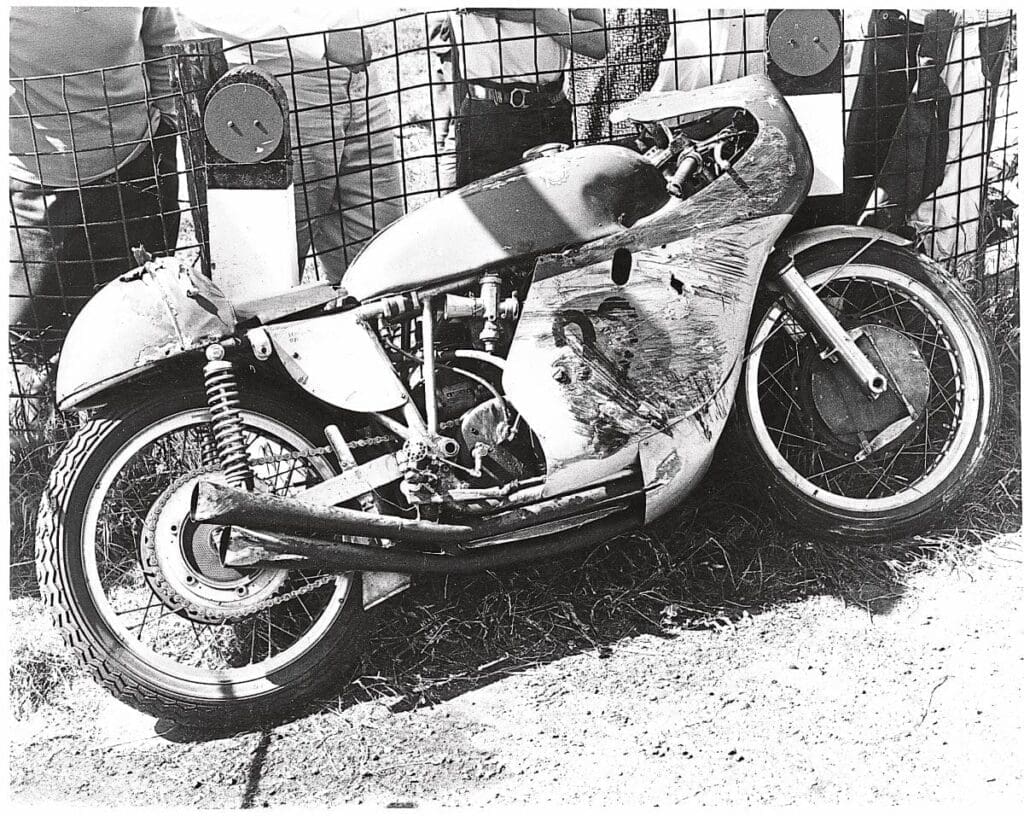
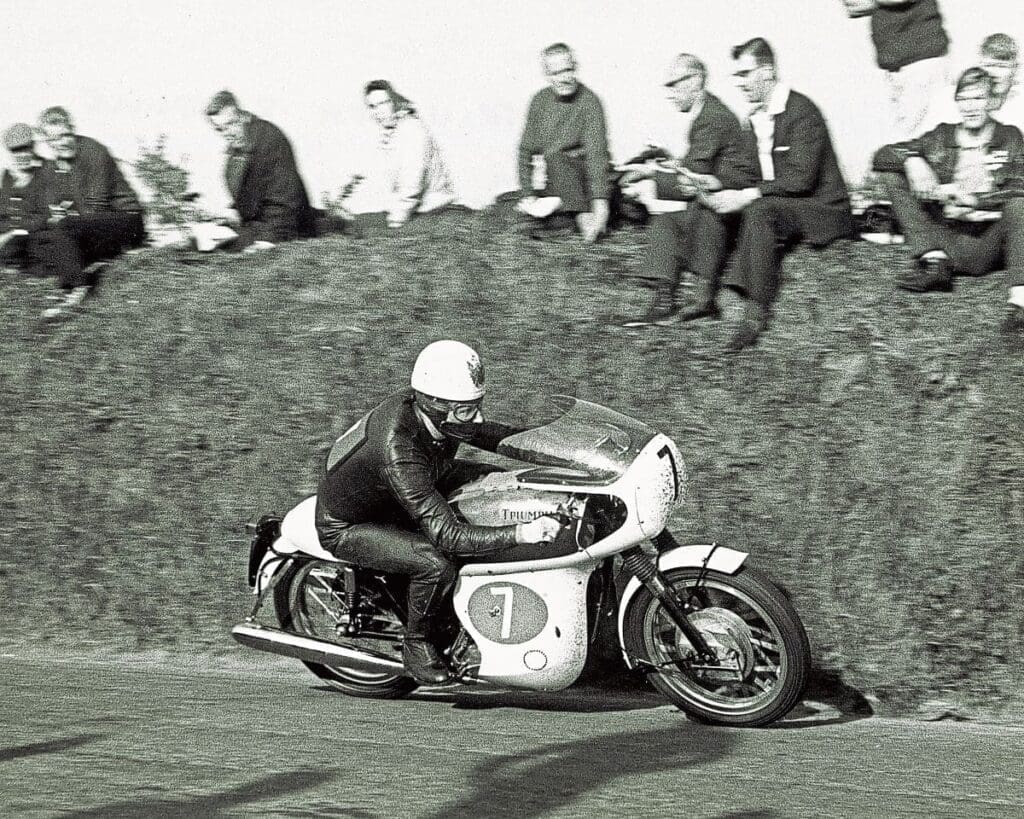
Back to being a privateer, John was sponsored by Comerfords of Thames Ditton and went on to win the 500cc Ulster GP on a Norton, beating John Surtees. But the next two years saw his bad luck returning. A broken arm sustained in a crash at Brands Hatch put him out for half of 1961 and then another accident at Scarborough put paid to his 1962 season.
Despite being out of action for more than a year, he was offered a ride by John Surtees on a Ducati, but he opted to ride for Geoff Duke for his Scuderia Duke team and achieved two second places at the TT aboard the works Gileras, second only to Mike Hailwood in the 1963 Senior TT. Although he gained another third place world championship standing, the MV Agustas were all-conquering that year, which must have been a little galling to the ex-works rider.
At Imola in 1964 there was another crash and this time Hartle fractured his skull. He was advised to retire and so he started a motorcycle accessory business. But being a shopkeeper was not what John wanted and he yearned to race again. Finally, he was given the medical all clear and he came back in true style. Returning to the track in 1967 he won the inaugural TT Production 750 race on a Triumph Bonneville, the Hutchinson ‘100’, and came third in the 500cc world championship riding a Metisse Matchless.
The 1968 season was less glorious but John was still charging forward on what was an impressive comeback. He was still only 34, fit and as keen as ever to race. On August 31, 1968 he was riding the Metisse at an international meeting at Oliver’s Mount at Scarborough when, while accelerating out of the hairpin, he collided with another rider who had missed a gear. Hartle was thrown from his machine and hit the metal support of a pedestrian bridge, injuring him fatally.
The man who had always taken bad luck in his stride and always pushed forward, who never gave up, who came so close to a world championship, was gone.


